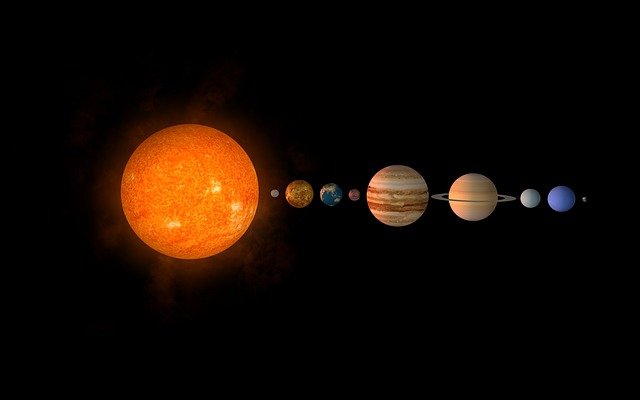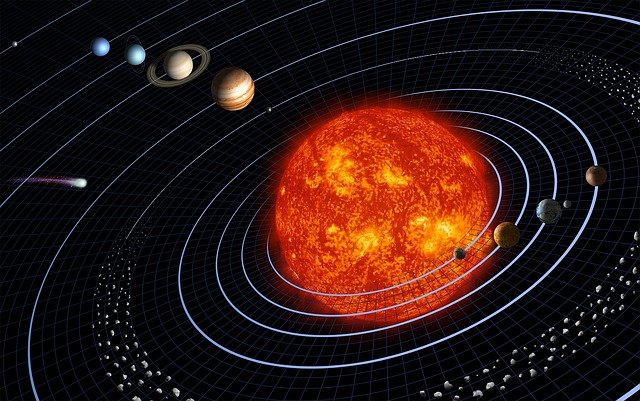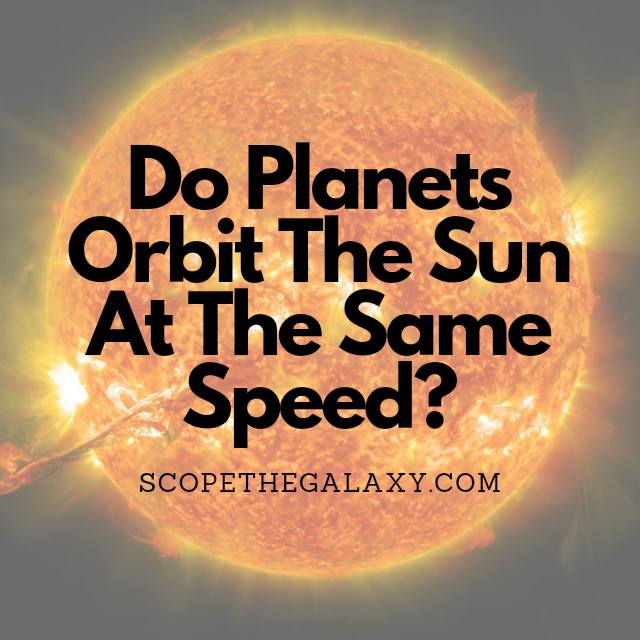*This post may contain affiliate links. This means we may make a commission if you purchase an item using one of our links*
Every planet in the solar system is speeding around our Sun at unfathomable speeds. Some planets travel much faster than others; it’s all to do with the gravitational force of the Sun and the velocity required to prevent them from falling into the hot mass of our central star. As a result the speeds at which each planet orbits the Sun differ based on their distance from it, where the closest planet is the fastest and farthest planet the slowest.
Continue reading to discover why each planet orbits the Sun at a different speed and why these speeds vary so much. Compare how fast each planet travels around the Sun and if they can go even faster if all the necessary steps were to align.
Why Do Planets Orbit The Sun At Different Speeds?
Table of Contents
The planets orbit the Sun at different speeds depending on their distance from this massive star; a planet closer to the Sun experiences a stronger gravitational pull and thus travels faster, whereas planets orbiting further from the Sun have a weaker gravitational influence and thus travel much slower.
Kepler’s second law of orbital motion defines the speed variance during a planet’s orbit. These laws describe the effect of gravity on an object in orbit, and we can apply his principles to the planets in the solar system.
Kepler’s other two laws of orbital motion state that a planet’s orbit around the Sun isn’t a perfect circle; instead, it’s elliptical. We can refer to an orbit’s roundness using the term eccentricity. An orbit with zero eccentricity is perfectly circular; a higher eccentricity level indicates an elliptical orbit.
In our solar system, Venus, Earth, and Neptune have the least eccentric orbits, while Mercury and Pluto have the most eccentric (or elliptical) orbits.
The third law compares an object’s motion with the orbit size. The further a planet is from the Sun, the longer orbital path it possesses. In addition, the further a planet is from the Sun, the weaker its gravitational pull. Therefore, we can say that the longer the orbital path, the slower the object will travel.
What Speed Do The Planets Orbit The Sun?

The fastest planet in our solar system is Mercury, which resides closest to the Sun and orbits this massive star at a speed of 47.4 kilometers per second! As we move further away from the Sun, each progressive planet travels slower.
The second planet from the Sun, Venus, travels at a speed of 35 km/s, while our planet, Earth, moves at a rate of 29.8km/s, and Mars orbits at a rate of 24.1km/s. Moving out to the gas giants, Jupiter orbits at a speed of 13.1 km/s, Saturn at 9.7 km/s, and Uranus at 6.8 km/s.
You might think Neptune takes a leisurely stroll around the solar system, which is 4.5 billion km away from the Sun, but this icy world still moves at an impressive speed. Neptune orbits the Sun at a rate of 5.4 kilometers every second, which is six times faster than an airborne bullet.
And these orbital rates affect the length of a year on each planet. Mercury and Venus are the only planets to have a shorter year than Earth at 88 days and 225 days, respectively.
A year on Mars is nearly double the length of an Earth year at 687 days. After that, the orbits rapidly descend, and the years become longer and longer. A year on Jupiter is 4,333 days, Saturn 10,759 days, and Uranus 30,687 days.
On Neptune, the furthest planet from the Sun, a year lasts 60,190, almost 165 years, surpassing an entire lifetime for us!
Do The Planets Closest To The Sun Move Faster?

Planets closer to the Sun move faster because they must reach a certain “escape velocity” to avoid falling into the sun. Every planet we observe travels at a speed fast enough to escape the gravitational pull of its star, each managing to secure a stable orbit and prevent a fiery death.
It’s not just a planet’s distance from the Sun which determines its speed of orbit. Remember that according to Kepler’s Laws of Motion, orbits are elliptical rather than spherical. This means that at specific points of a planet’s orbit, it will move closer to the Sun and increase its speed.
A planet moves fastest at the perihelion (or closest point) and slowest at the aphelion (or farthest point). On average, the Earth is 150 million km from the Sun; however, it moves to 147.1 million km at its perihelion and as far as 152.1 million km at its aphelion.
And the difference between the perihelion and aphelion is even more noticeable on highly eccentric planets such as Mercury. Here, the distance from the Sun varies between 47 million km and 70 million km.
Can The Planets Travel Even Faster Around The Sun?
Each planet travels around the Sun at just the right speed to maintain a steady orbit. Too much fluctuation in speed would cause the planet to fall out of orbit.
If the planet slowed down, the Sun’s gravitational pull would quickly overcome it, and the planet would be pulled into a fiery death. On the other hand, if a planet were to speed up, the tangential velocity would outweigh the radial velocity releasing the planet from the Sun’s orbit and launching it into outer space.
Summary
Each planet in our solar system moves around the Sun differently. This is because their distance from the Sun and the gravitational influence of this massive star determine the exact speed they need to maintain for a steady orbit.
It would be fatal if any of the planets were to speed up or slow down their orbit. For example, a slowed-down Earth would be sucked into the Sun, while a sped-up Earth would release from orbit and hurtle into the cold darkness of outer space.
References
Scientist’s Animation Reveals Planets’ Wildly Different Speeds (businessinsider.com)
Kepler’s Laws of Orbital Motion | How Things Fly (si.edu)
How Long is a Year on Other Planets? | NASA Space Place – NASA Science for Kids

